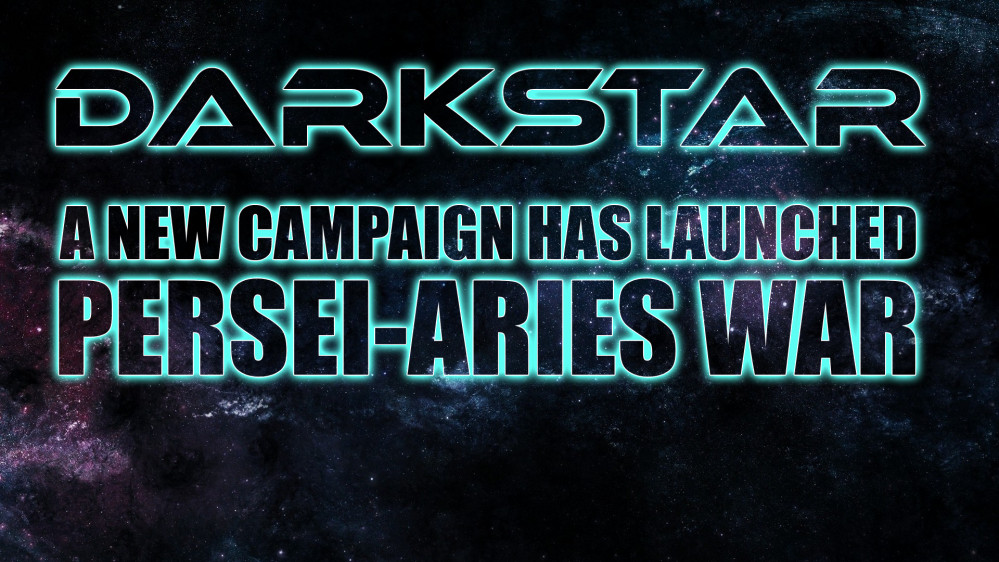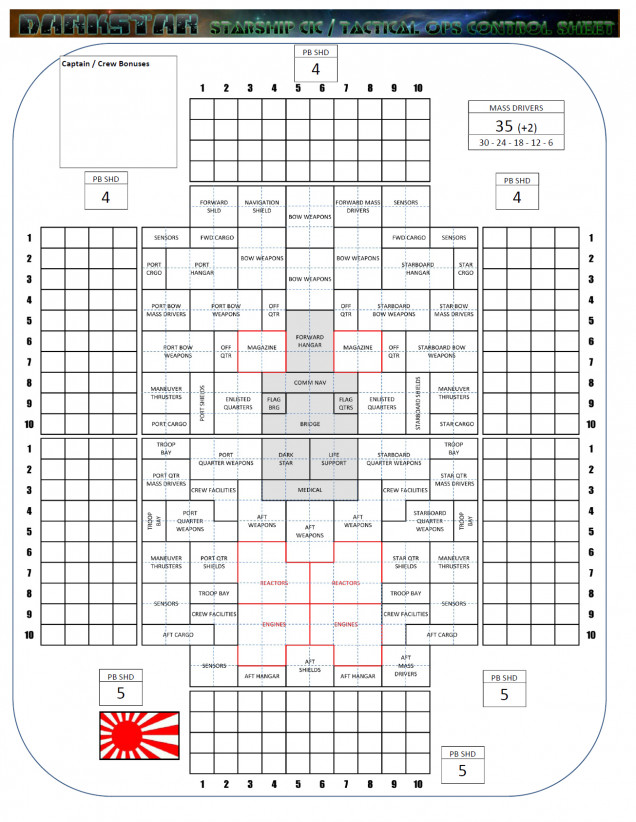
Persei-Aries War Resumes
New Warship Class: Sengoku Class Battlecruiser
I should note that this week’s warships were designed by the community during a “Warship Workshop” held on our Discord Channel last Saturday. Now the community members have made their decisions, set their priorities, and made their tradeoffs, we’re ready to try these new warships in live Darkstar games in the weeks ahead!
>>>>>>>>>>>>>>>>>>>>>>>>>>>
The Sengoku-class battlecruisers, named for the leading daimyō who unified Japan during the Sengoku period of the 16th Century, are the end product of hard lessons learned by the Japanese Navy in the recent Xi Scorpio War. Together with two smaller American task forces, a larger Japanese task force under the flag of Commodore Hiromi Ozawa fought for fourteen incredibly violent months to reclaim the “Flower of Hokkaido” colony of the Kurakawa system (Xi Scorpio D), one of the closest Earth-analogs yet found in Known Space. In the final battle of that war, however, the Japanese flagship, the Taiho class light cruiser Sendai, exploded, Commodore Ozawa barely escaping with her life. In the end the Americans (Task Force Liberty, Task Force Oriskany) had to finish that battle and win the war, along with the smaller Scorpion’s Tail War that immediately followed.
In the wake of these events, the message was clear. Too many warships of the Imperial Japanese Navy fell into two divergent categories. First, there were the fast, sleep, ultra-tech, (and ultra-expensive) but tragically vulnerable “glass cannons.” Second, there were the proud old icons of the fleet, storied, reliable, tough … but just plain old. After so many modernizations and upgrades, they barely had an original part in their hulls and orbital shipyards could barely maintain or repair them. Besides, they couldn’t keep up with the faster elements of the fleet, especially when the Japanese Navy had to cover a long distance fast (like they had to with Xi Scorpio, 92 light-years from Sol).
In the wake of the Xi Scorpio War, the new Katana class heavy cruiser was designed, embracing the EPC as her main weapon type with three triple turrets, small se. The first one, Naginata was assigned to Commodore Ozawa, who smashed a British heavy cruiser task force with the new ship in less than four minutes. The Naginata also performed very well in the subsequent Duchess Annabel’s War and Third Hercules War, where a second shop of the class, IJN Kama, also performed very well, particularly against heavier Russian warships.
With the success of the Katana class, talk quickly started in Naval command circles of taking the next logical step, expanding the general concepts of the Katana class into the battleship range. Thus we see the Sengoku-class battlecruiser, armed with a similar layout of main armament, protection and defensive systems priorities, and curious omissions in the design (considering the norms of Japanese naval design).
First up, the Sengoku carries three triple turrets of heavy EPCs, but much larger 25-teravolt weapons, a single shot easily capable scorching through the armor of a light cruiser even at ranges beyond 5,000 kilometers. Closer in, a single bolt from these weapons can all but saw a frigate in half. These turrets are laid out in the classic Pacific configuration, with two triple mounts forward (one ventral, one dorsal) and one aft, along with two triple turrets of 30-kilogram plasma projectors. Note these two secondary batteries are mounted aft (clearly to meant to ward off close-range stern-rakes by smaller warships), but not on the port and starboard quarters, but along the ventral centerline of the ship so they can add to the battlecruiser’s broadside firepower as well. This weapons arrangement is admittedly risky, since the capacitors and relays for all aft weapons must pass through only a few compartments along the Sengoku’s stern, but designers note these conduits are behind the main reactors … if enemy fire ever got this deep in the ship’s hindquarters, she’s probably been crippled already.
One must note, however, that the Sengoku is not a battleship. She is a battlecruiser. At only 364,000 tons, she is light for her size, and so maintains a fast acceleration curve. She easily outpaces Japanese battleship classes like the Haruna and the Yamato, keeping up with other battlecruisers like the Cross class and battleships like the American Colorado and the New Roman Constantine. Protection is also solid with powerful ECM and gravitic shielding emitters, together with an expanded and up-scaled version of the advanced “Seiku” (Clear Sky) targeting and fire control system. But all this speed, accuracy, and protection comes at a cost, and that cost is paid in the simple weight of the firepower. Although impressive, those nine 25-teravolt EPCs are hardly war-winners compared to weapons mounted on other full battleships. Further, the Sengoku’s secondary weapons, while formidable up close, are far less effective at longer ranges. And of course, being a “small battleship,” she can only push a ninth-magnitude Darkstar wave, meaning she will go nowhere very fast in the interstellar sense, and she will almost never achieve any kind of operational or strategic surprise.
The Sengoku is a brand new class, the first units just having finished their fitting out and shakedown cruises. While fearsome, and based on a very successful design, it remains to be seen whether these “big sisters” to the Katana class cruisers will really stand up to the crucible of combat.












































































Look forward to take her for a spin – Compromises where made (they had to be) but very happy on paper at least